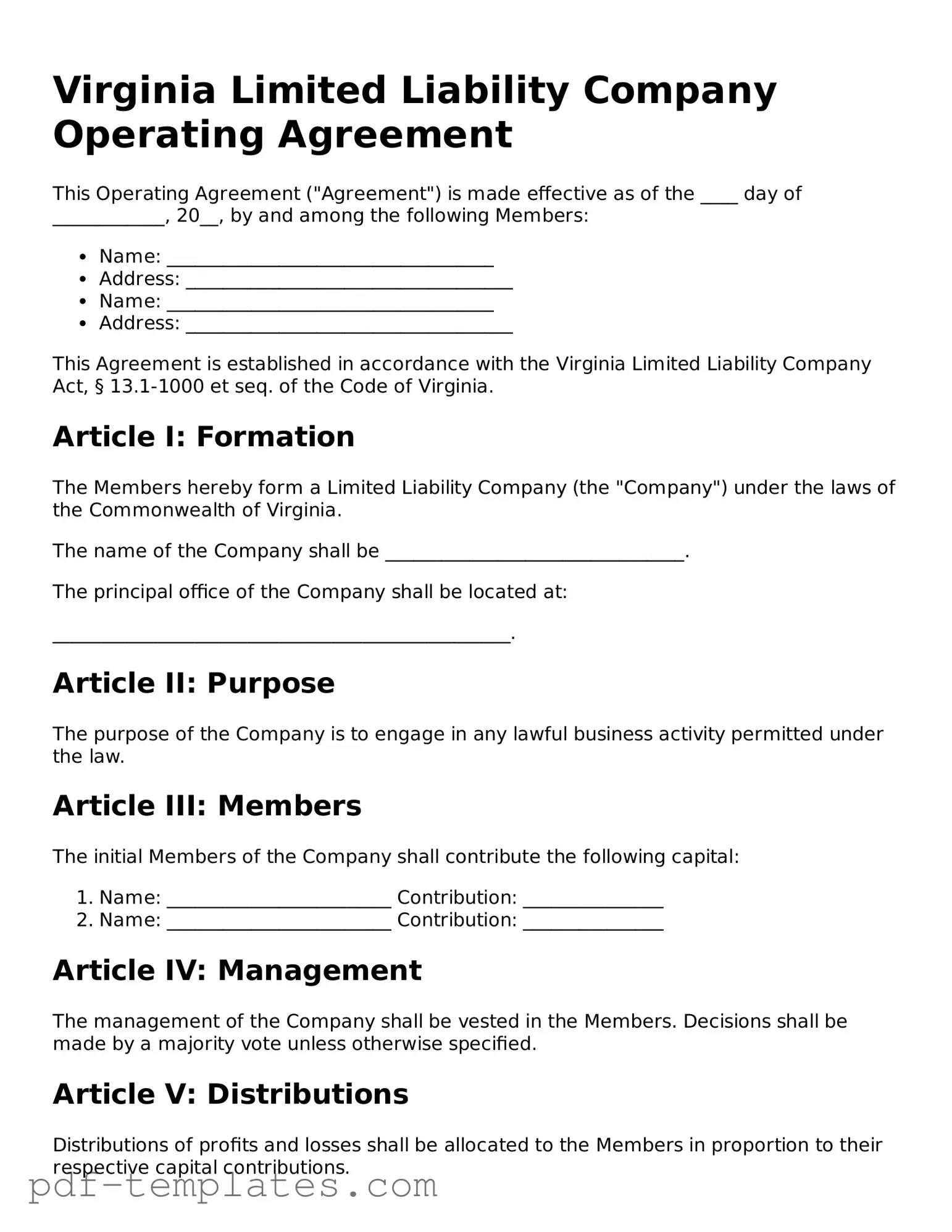The Virginia Operating Agreement is similar to the LLC Membership Agreement. Both documents outline the rights and responsibilities of members in a limited liability company. They serve to clarify the management structure and the distribution of profits and losses among members. While the Operating Agreement is specific to Virginia, the Membership Agreement can be used in various states, but both aim to protect the interests of the members and ensure smooth operations within the company.
When navigating the complexities of immigration documentation, it is crucial to understand various forms, including the USCIS I-864, which can be referenced for detailed guidance at documentonline.org/blank-uscis-i-864/. This form plays an essential role in the support structure required for immigrants, ensuring that sponsors are committed to providing necessary financial aid, thus facilitating a smoother process towards permanent residency in the United States.
Another comparable document is the Partnership Agreement. This agreement is used by partnerships to define the roles of partners, how profits are shared, and the procedures for resolving disputes. Like the Operating Agreement, it establishes clear guidelines for the operation of the business. However, while the Operating Agreement is specific to LLCs, the Partnership Agreement is tailored for partnerships, making it essential for different business structures.
The Corporate Bylaws also share similarities with the Virginia Operating Agreement. Bylaws govern the internal management of a corporation, detailing the roles of directors and officers, meeting protocols, and voting procedures. Both documents are crucial for establishing the framework within which a business operates. However, while Operating Agreements are for LLCs, Bylaws are specific to corporations, reflecting the differences in business structure.
Lastly, the Shareholders Agreement is akin to the Virginia Operating Agreement. This document is used in corporations to outline the rights and obligations of shareholders. It covers aspects such as share transfer restrictions and decision-making processes. Both agreements aim to protect the interests of their respective parties and ensure that all members or shareholders understand their rights and responsibilities within the business entity.
